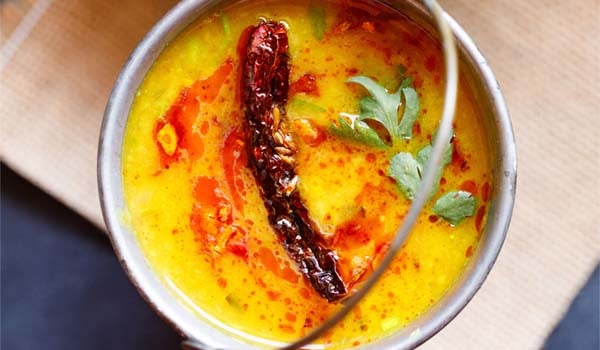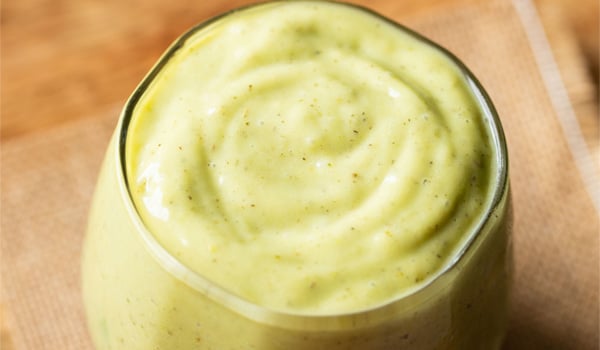Dal Tadka is a timeless and beloved North Indian lentil dish made with tuvar dal (split pigeon peas) or a combination of lentils, cooked to a creamy consistency and infused with a fragrant tempering (tadka) of oil or ghee, cumin, garlic, red chilies, and herbs. Served hot with rice or roti, this dish is slightly spicy and rich in flavor. My Restaurant Style Dal Tadka recipe brings the delightful experience of dining out right to your kitchen. In this step-by-step guide, I will introduce you to the dhungar smoking technique to impart an authentic restaurant-style taste to your traditional lentil curry.
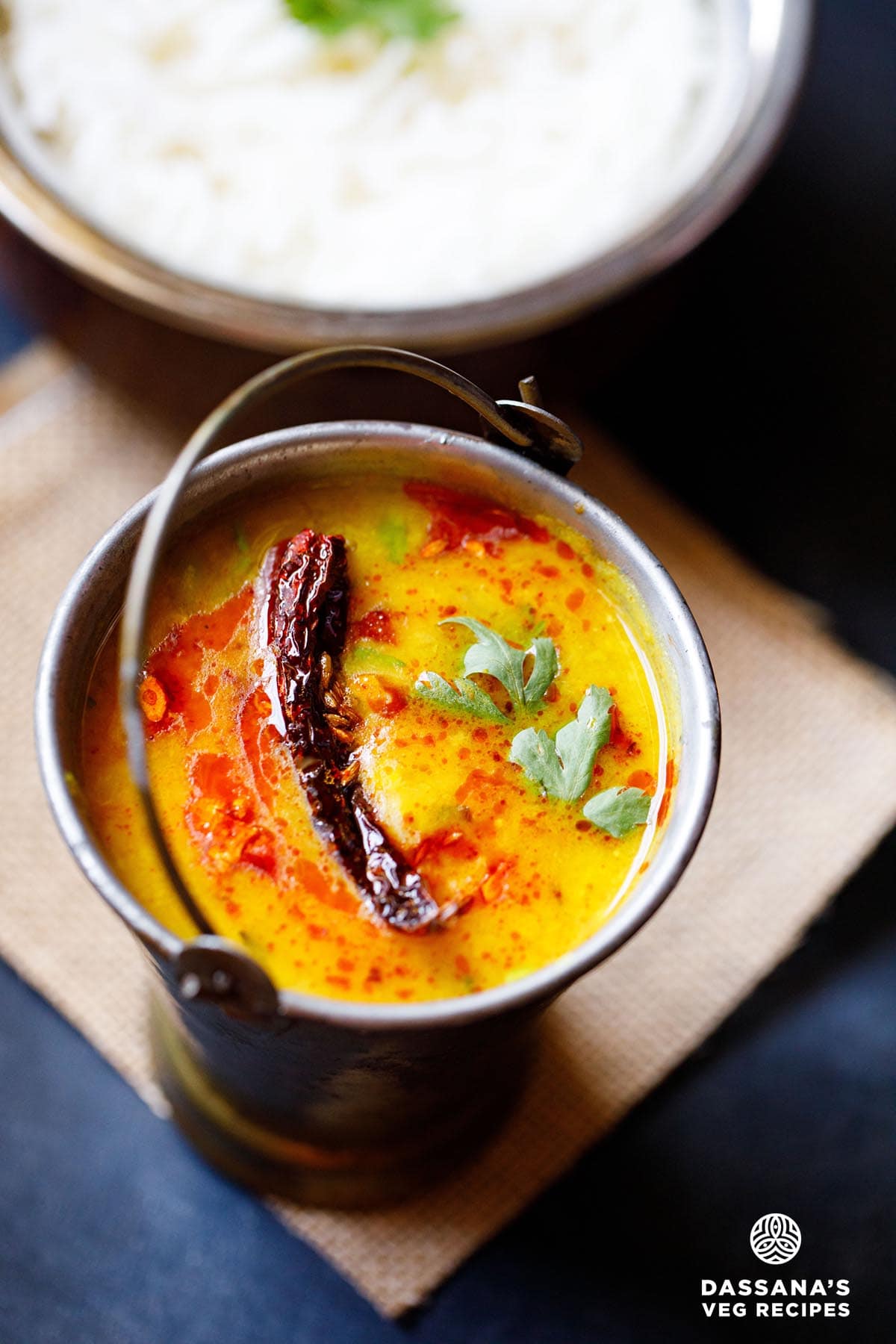
About Dal Tadka Recipe
Dal Tadka is a popular Indian lentil dish—“dal” means “lentils” in Hindi, and “tadka” (or sometimes ‘chaunk’) refers to the tempering method commonly used in Indian cooking.
The tadka involves frying spices and herbs in oil to release their essential oils, aroma, and flavor. This infused oil mixture, along with whole spices, is added to various dishes, significantly enhancing their flavor and aroma.
Dal Tadka is one of the most popular lentil dishes served in Indian restaurants. Essentially, it consists of cooked lentils tempered with oil- or ghee-fried spices and herbs.
There are countless variations of this dish across the Indian subcontinent, with different types of lentils and spices used in each version.
Most Indian households opt for a basic tempering with commonly available spices and herbs, including mustard seeds, cumin seeds, green or red chilies, garlic, asafoetida, curry leaves, and red chili powder.
What Makes This Recipe Restaurant Style
I must confess that I absolutely love the dal tadka served in restaurants, even though we rarely dine out.
Eating out can be quite expensive, and it’s difficult to know if the dishes are prepared with healthy ingredients, as I prefer to cook at home.
I often challenge myself to recreate the delicious restaurant flavors I crave, ensuring they are healthy for my family.
One significant technique for achieving restaurant-quality flavors is the tadka method described above.
A key flavor-enhancing technique involves smoking the dal with a piece of red-hot charcoal, known as dhungar in Hindi.
This simple smoking method takes only about three minutes and will elevate your dal to a masterpiece worthy of any fine dining experience!
As with many Indian dishes, numerous regional variations exist. This authentic Dal Tadka recipe leans towards a North Indian style, featuring a dhaba-style tadka with red chilies, chili powder, cumin, asafoetida (hing), and garlic.
What Kind of Lentils Should I Use
Dal is a staple in Indian cuisine, with numerous varieties available, each region boasting its own delicious recipes.
Generally, dal tadka is made with yellow lentils, with tuvar dal (also known as arhar or toor dal) being the most commonly used. For this recipe, I use tuvar dal.
Some people prefer to use Moong Dal, which consists of split yellow mung beans. Alternatively, Chana Dal, which is split and hulled Bengal gram, can also be used.
Dal Tadka can be prepared with various types of lentils. At times, I combine both moong dal and tuvar dal, or simply use Masoor Dal (split red lentils) alongside toor dal.
How to Make Dal Tadka
Cook Lentils
1. Rinse 1 cup of tuvar dal thoroughly in water and add it to a 3-liter stovetop pressure cooker.
No pressure cooker? You can also cook the lentils in a pot or pan. Soak the lentils for one to two hours before cooking them in a pot.
The stovetop cooking method is detailed in the notes section of the recipe card below.

2. Add the following ingredients to the lentils in the cooker:
- ½ cup chopped onions
- 1 cup finely chopped tomatoes
- 1 or 2 green chilies (you can substitute with 1 teaspoon of chopped Anaheim or Serrano pepper)
- 1 teaspoon finely chopped ginger

3. Pour 2.5 cups of water into the pressure cooker.
If cooking in a pan or pot, add about 3 to 3.5 cups of water.

4. Add ½ teaspoon of turmeric powder and a pinch of asafoetida (hing).
If you do not have asafoetida, you can skip it.
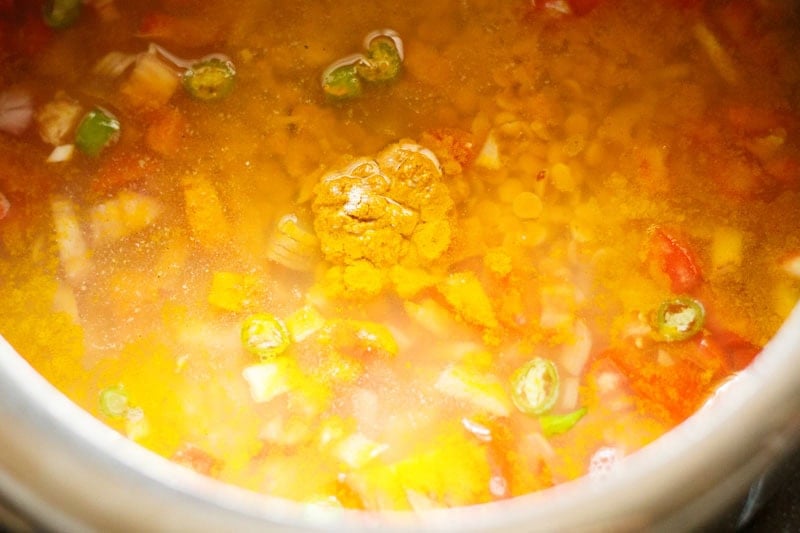
5. Mix well.
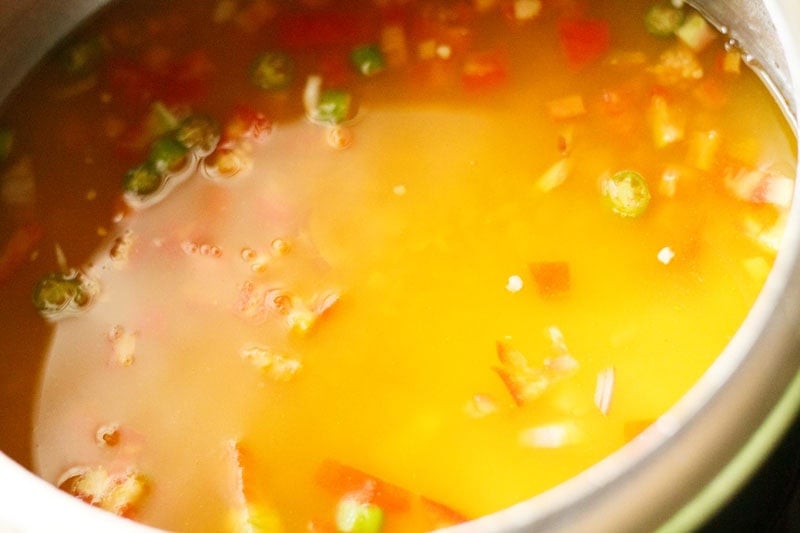
6. Pressure cook the lentils on medium to medium-high heat for about 7 to 8 whistles (approximately 8 to 10 minutes), or until they are soft and creamy.
Once the pressure has naturally released, open the lid and check if the lentils are thoroughly softened.
Mash the cooked lentils using a whisk or spoon and set aside.
If the consistency is too thick, add about ½ to 1 cup of water (depending on your desired thickness) to achieve a medium flowing consistency.
Simmer the cooked lentils for 3 to 4 minutes on low to medium-low heat. The proper consistency of the lentils is demonstrated in the photo below.
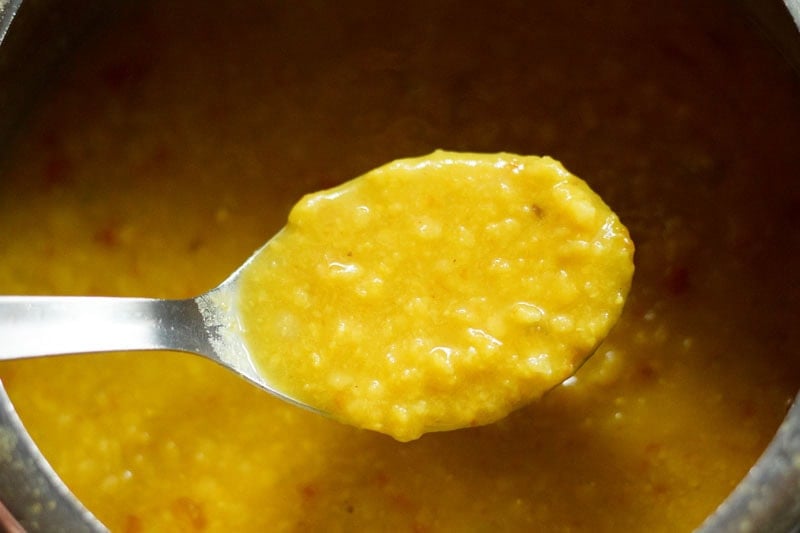
7. Once the desired consistency is reached, add the following ingredients and turn off the heat:
- ½ teaspoon garam masala powder
- 2 tablespoons chopped coriander leaves (cilantro)
- 1 tablespoon light cream or low-fat cream (optional)
- Salt to taste

8. Mix thoroughly to combine all ingredients evenly. Taste and adjust the salt before adding the tadka.
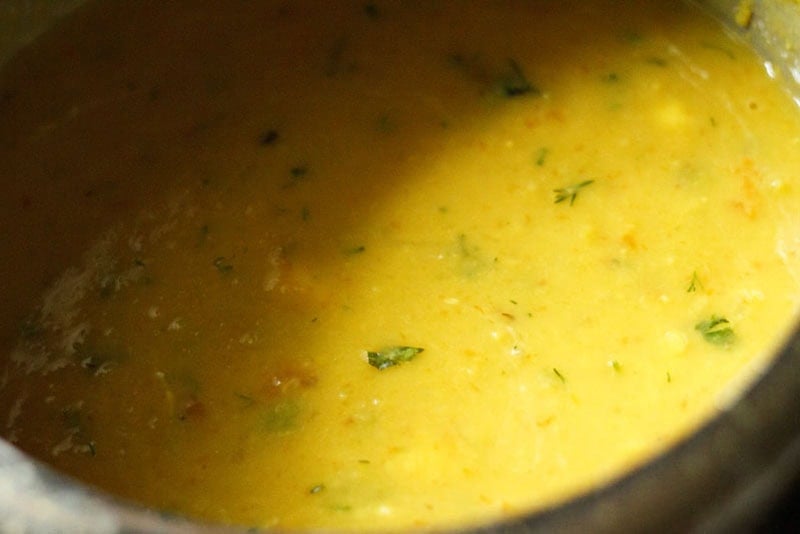
9. The final consistency of the cooked dal is shown in the photo below.
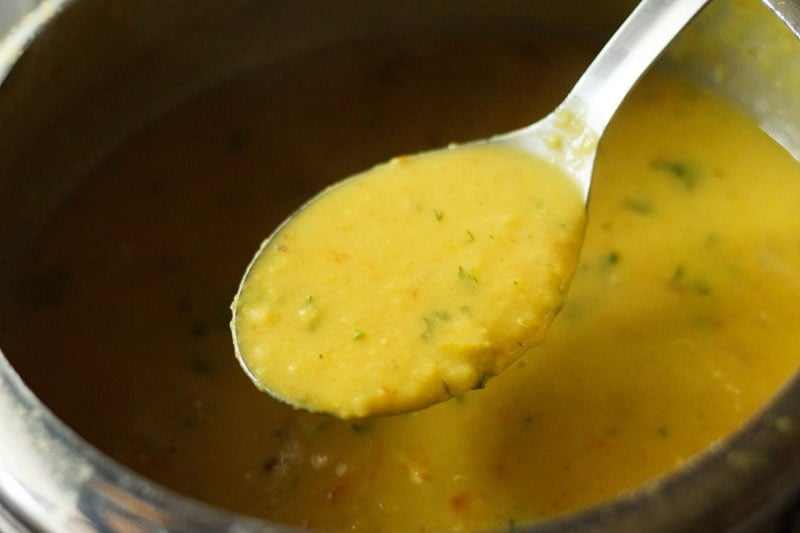
Smoke Lentils Using Dhungar Method (Optional)
10. To achieve the smoky aroma reminiscent of restaurant-style dal, follow the dhungar method.
Using tongs, place a small piece of charcoal on a flame-proof metal grill pan and burn it until it becomes red hot.
Ensure you use natural charcoal, avoiding any with added flame accelerants.
This is an optional step; you can proceed directly to the tempering method if preferred.
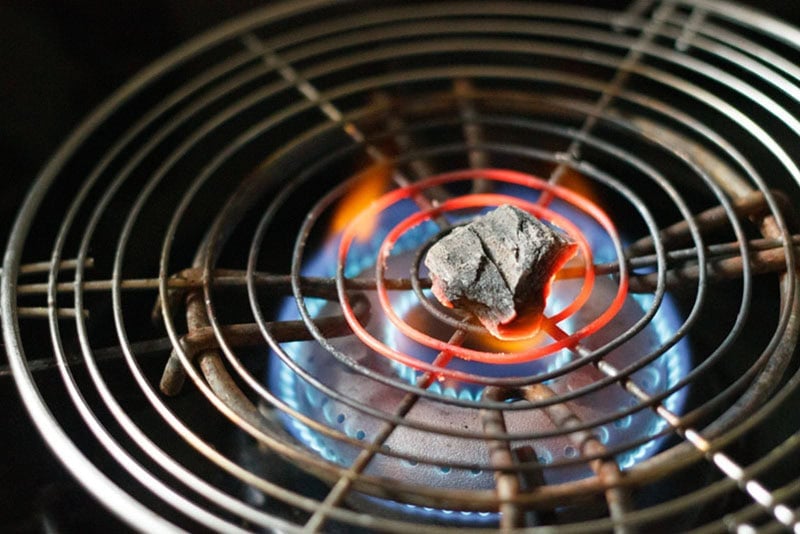
11. Place the red-hot charcoal in a small steel bowl. Alternatively, you can use a halved hollow onion instead of the bowl.
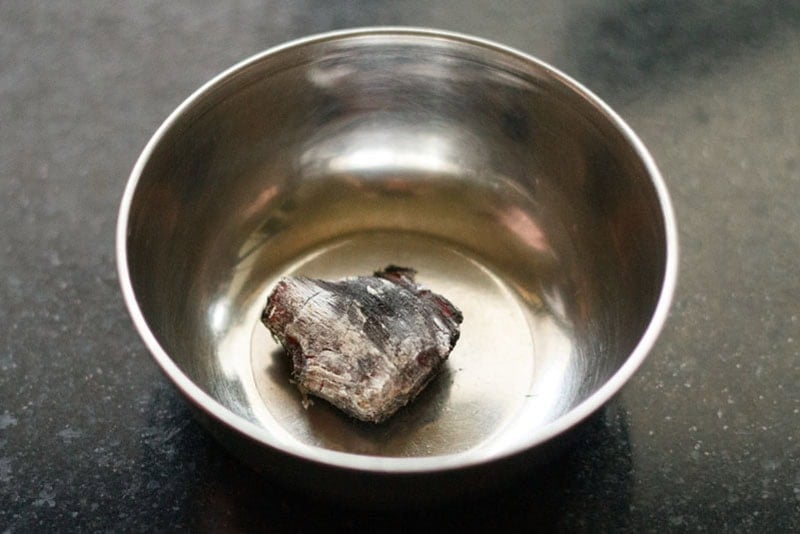
12. Pour about ¼ teaspoon of oil or ghee onto the charcoal. You will see fumes emanating as soon as you pour the oil or ghee on the hot charcoal.

13. Place this bowl on top of the dal.
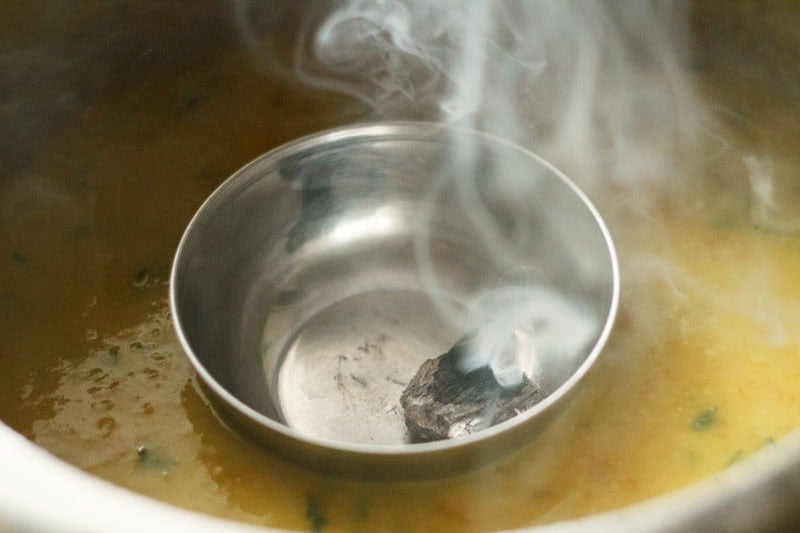
14. Cover the cooker or pot with a lid and let the dal absorb the smoke. Smoke for only 1 to 2 minutes; do not leave it for too long, as it may impart a bitter taste.
Carefully remove the bowl with tongs and cover the cooker with a lid. Set aside.
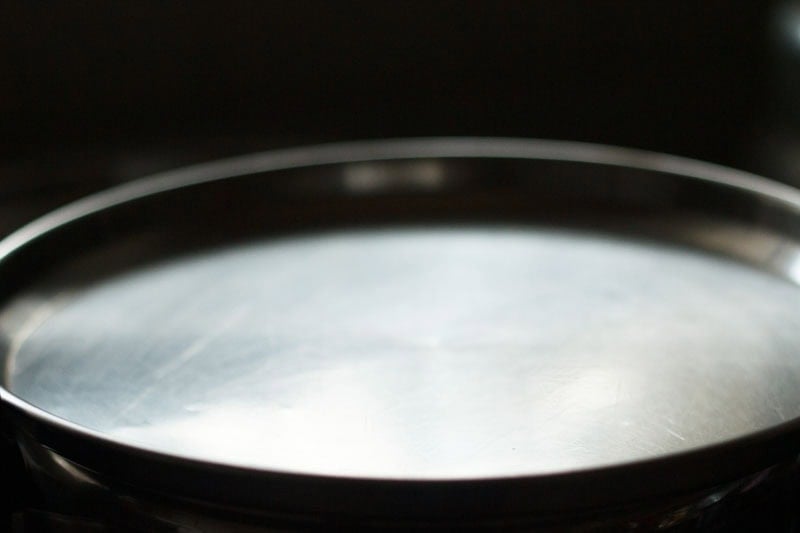
Make Dal Tadka
15. Next, heat 3 tablespoons of oil or ghee (clarified butter) in a small pan over low-medium heat.
First, add 1 teaspoon of cumin seeds and allow them to crackle. The cumin should be fried, not raw, but be careful not to burn them.
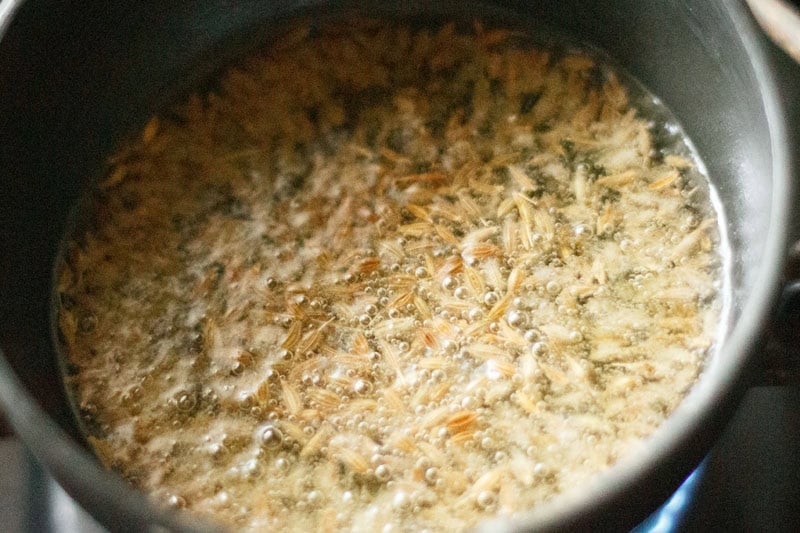
16. Now add 2 to 3 dry red chilies, a generous pinch of asafoetida, and 5 to 6 finely chopped garlic cloves.
Allow the garlic to brown lightly and the red chilies to change color. Avoid burning the garlic.
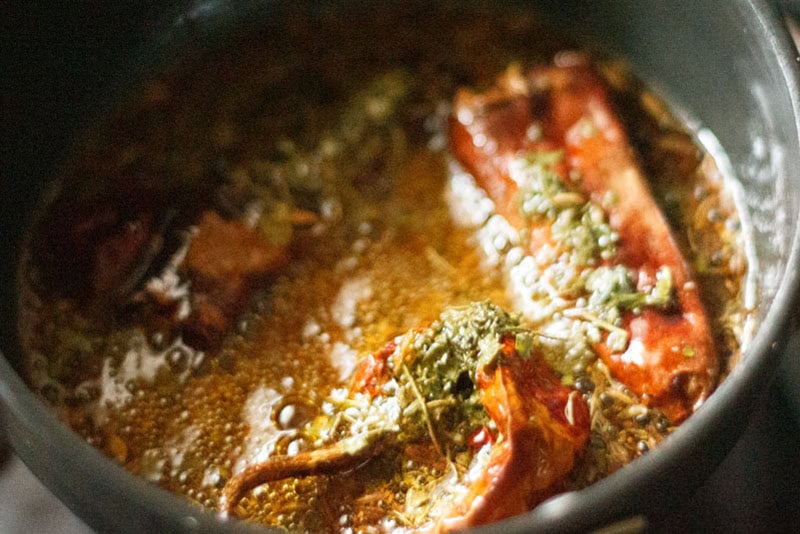
17. Finally, add 1 teaspoon of crushed kasuri methi (dried fenugreek leaves) and ½ teaspoon of Kashmiri red chili powder (or cayenne pepper or paprika).
Mix well and turn off the heat.

18. Pour the entire tempering mixture, along with the oil or ghee, into the prepared dal.

19. You can either mix the dal with the tempering or serve the dal tadka with the tempering on top. Personally, I prefer the presentation of having the tadka floating on top. Garnish with coriander leaves and enjoy!
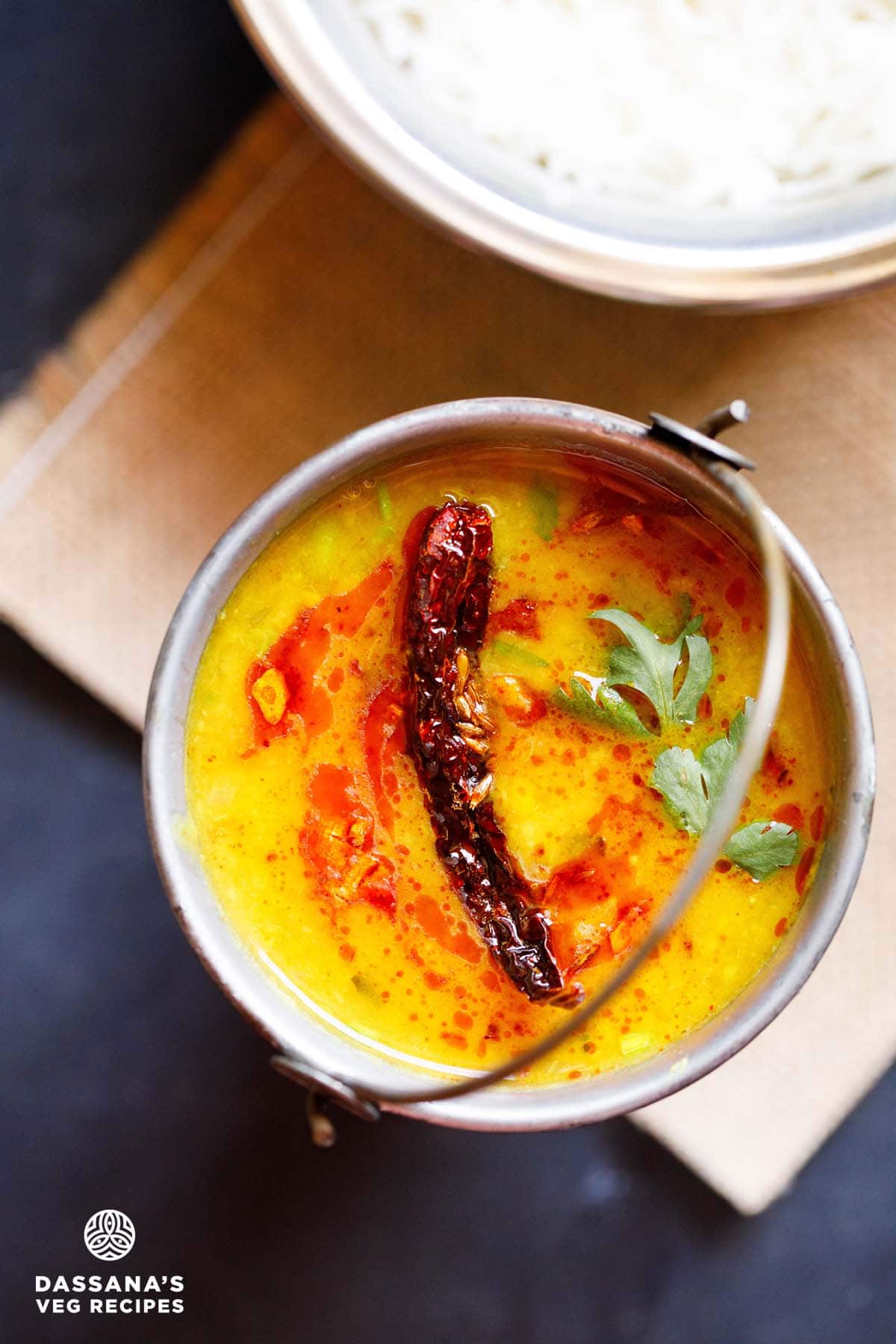
Serving Suggestions
The tempering adds a wealth of flavor and aroma, making dal tadka pair beautifully with steamed rice or jeera rice (cumin-flavored pilaf).
Serve Dal Tadka hot with your choice of steamed Basmati Rice or Jeera Rice, or alongside Indian flatbreads like Tandoori Roti, Paratha, or Chapati.
Expert Tips
Dal Tadka is quite simple to prepare, even in this restaurant-style recipe. Here are some tips to enhance your cooking experience:
- Order of Preparation: Cook the lentils first, then prepare the tadka just before serving. You can cook the lentils a few hours in advance and refrigerate them; before serving, reheat and then temper the spices. For the best taste, always prepare the lentils fresh.
- Type of Lentils: You can use any yellow dal (split lentils) for this dish. I prefer Tuvar dal or a mix of Tuvar dal and Masoor dal. Cooking times may vary based on the age and freshness of the lentils.
- Tomatoes: I added tomatoes for a nice tang. If you don’t have tomatoes, add ½ to 1 teaspoon of lemon juice when the lentils are cooked. Canned diced tomatoes can also be used; just chop them finely before adding.
- Tempering Oil: You can use ghee or a neutral oil for tempering. I used sunflower oil in this recipe, but ghee also adds excellent flavor. Fry the tempering ingredients over low heat to avoid burning.
- Dhungar Method: If possible, I highly recommend using this charcoal smoking method for a true restaurant-style flavor. If you don’t have charcoal, you can skip this step or use smoked paprika instead of red chili powder.
- Consistency: The cooked dal should have a medium consistency. Adjust the thickness by adding less or more water as desired.
- Soaking Lentils: Soaking the lentils for 30 to 40 minutes before cooking will speed up the cooking time.
FAQs
While similar in ingredients, these lentil recipes differ in cooking techniques. In dal tadka, lentils are cooked with aromatics like onions, garlic, turmeric, and tomatoes. After being lightly mashed, a tadka of spices and herbs is added. In dal fry, the lentils are cooked plain or with turmeric, mixed with a sautéed mixture of onions, tomatoes, and spices, then simmered.
While I recommend consulting a licensed professional for dietary advice, lentils are an excellent source of vegetarian protein, fiber, and various vitamins and minerals, making dal tadka a healthy choice.
For health reasons and optimal nutritional benefits, it’s best to consume lentils hot and freshly cooked, rather than preparing them a day in advance.
More Popular Dal Recipes

